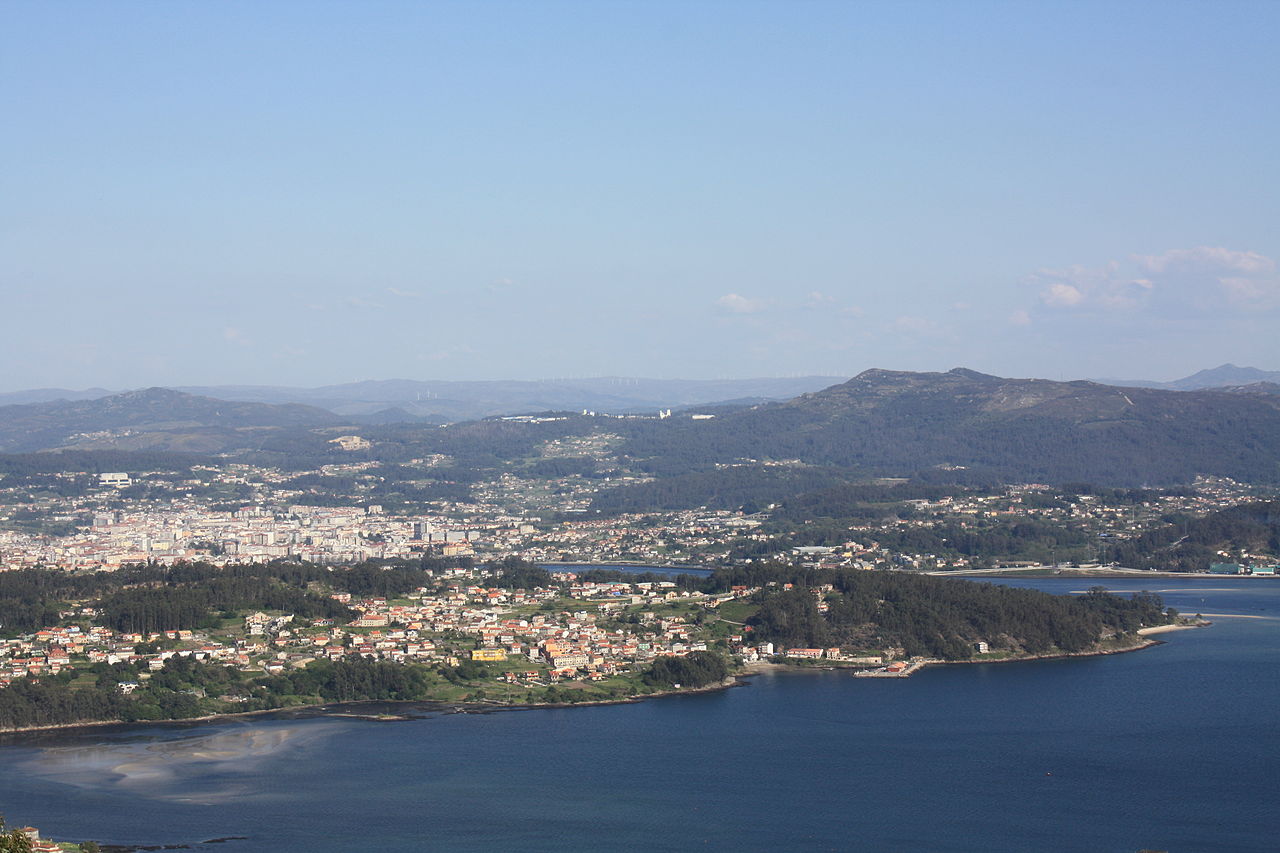
What to do in Pontevedra? It makes perfect sense for us to ask ourselves this question, since this city of lower estuaries has never enjoyed the tourist popularity of other Galicia like La Coruña, Santiago de Compostela and even Lugo.
However, Pontevedra is a welcoming city, with a huge monumental heritage, a wonderful nature environment and a delicious gastronomy. As if all this were not enough, today is a sustainable city who has received awards such as UN Habitat, which recognizes it for its comfort to live with regard to quality of urban services and mobility. If you want to discover what to do in Pontevedra, we invite you to follow us.
What to do in Pontevedra: visit its monuments
The very foundation of Pontevedra is shrouded in legend. It says that Teucer, one of the characters in the Trojan war, came to the area after being banished by his father, Telamon, and guided by the siren Leucoiña. In love with the place, he founded the city of Hellenes, which would be the current Pontevedra.
More historical rigor has the fact that it is known of the existence of two pre-roman castros in what is now the city and also the Latin settlement of Turkey. In any case, Pontevedra has many centuries of history that are reflected in its rich monumental heritage. Let's get to know it.
The old town of Pontevedra holds the recognition of Historic Artistic Set since 1951. To give you an idea of its importance, it received it only eleven years after the spectacular Santiago de Compostela. For this reason, it is almost impossible to talk here about all its buildings of interest and we will only talk about the most important. But first, we will mention the remains of his medieval wall, from which you can see the crenellated cloth of Arzobispo Malvar street.
Royal Basilica of Santa María la Mayor
Built in the XNUMXth century following the canons of the late gothicIt also presents elements of the Renaissance and Portuguese Manueline styles. This is clearly seen in its precious plateresque facade which is almost an altarpiece.
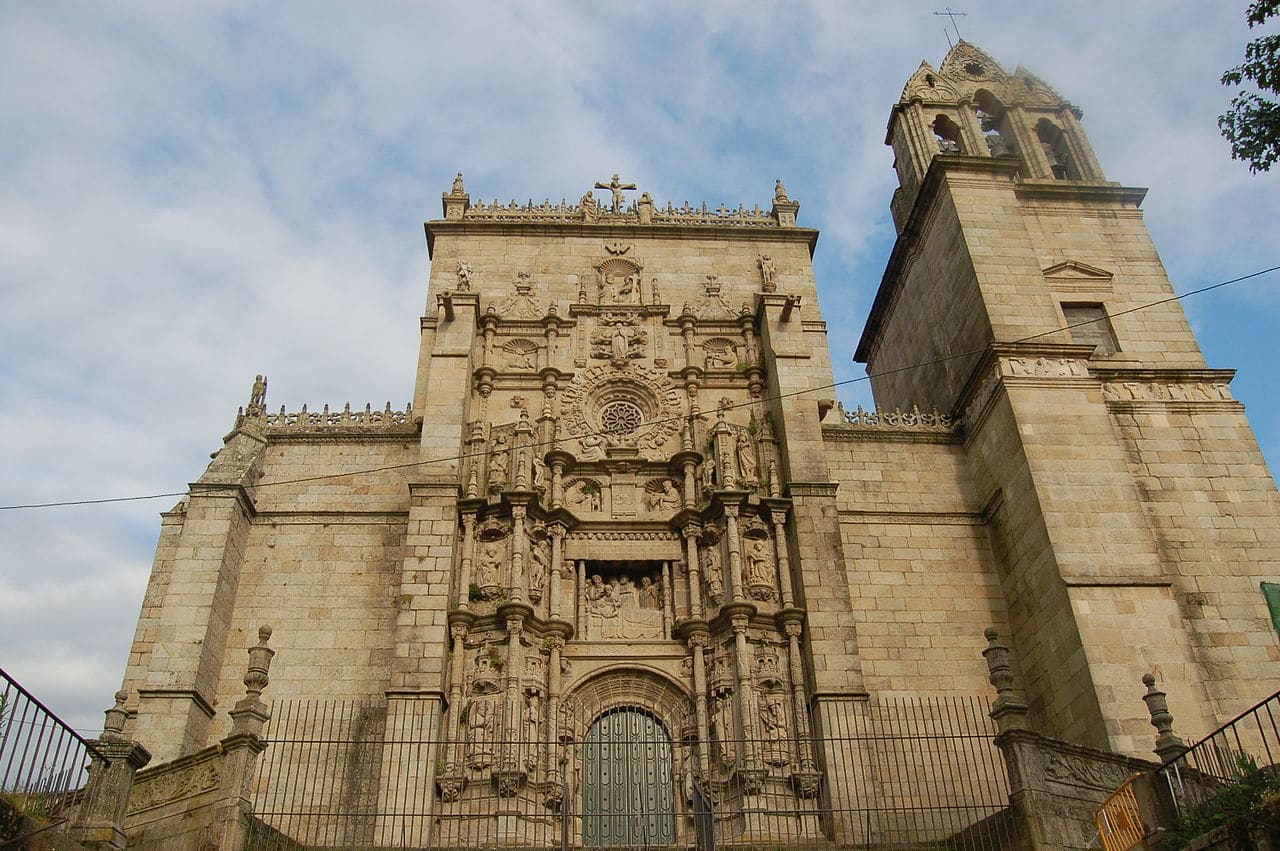
Royal Basilica of Santa María la Mayor
Regarding its interior, with a basilica floor plan, you will be struck by its ribbed or ribbed vaults and chapels such as that of Christ, with its baroque altar; that of La Purísima, where the Virgin of Hope, patron saint of Pontevedra; that of the Sorrowful Virgin, with her Reclining Christ, or the Greater, where you can see a wood and walnut altarpiece by the sculptor Maximum Magariños.
Ruins of the Santo Domingo convent
Currently, they are part of the building of the Provincial Museum of Pontevedra, which in turn is located in the beautiful Castro Monteagudo Pazo, built in the XNUMXth century. You can still see the head of the old church today with five Gothic apses dating from the XNUMXth century. The ruins are National Monument 1895 since.
The Peregrina church
This temple is a must if you travel to Pontevedra for its originality. Have scallop plant, which makes it practically circular. Built in the XNUMXth century, in terms of its architectural style, combines the baroque with the neoclassical. And inside it houses an image of the Pilgrim Virgin, patron of the province of Pontevedra and the Camino de Santiago Portugues.
Other religious monuments
The city of Pontevedra has an impressive heritage of religious architecture. Among your visits should also be the San Francisco church, built in the XNUMXth century according to Gothic canons, and that of San Bartolomé, of baroque style and that houses another image of the Virgin of Hope.
Regarding the convents, we advise you to see the one of Casa Particular in Santa Clara, built between the XNUMXth and XNUMXth centuries, and that of the Dorotean Sisters, which houses the Shrine of the Apparitions, where Sister Lucia, one of the girls from the events of Fátima .
Finally, as for the monasteries, it is worth visiting those of lerez, located on the outskirts and baroque style, and poyo, also four kilometers from Pontevedra and combining Renaissance and Baroque features.
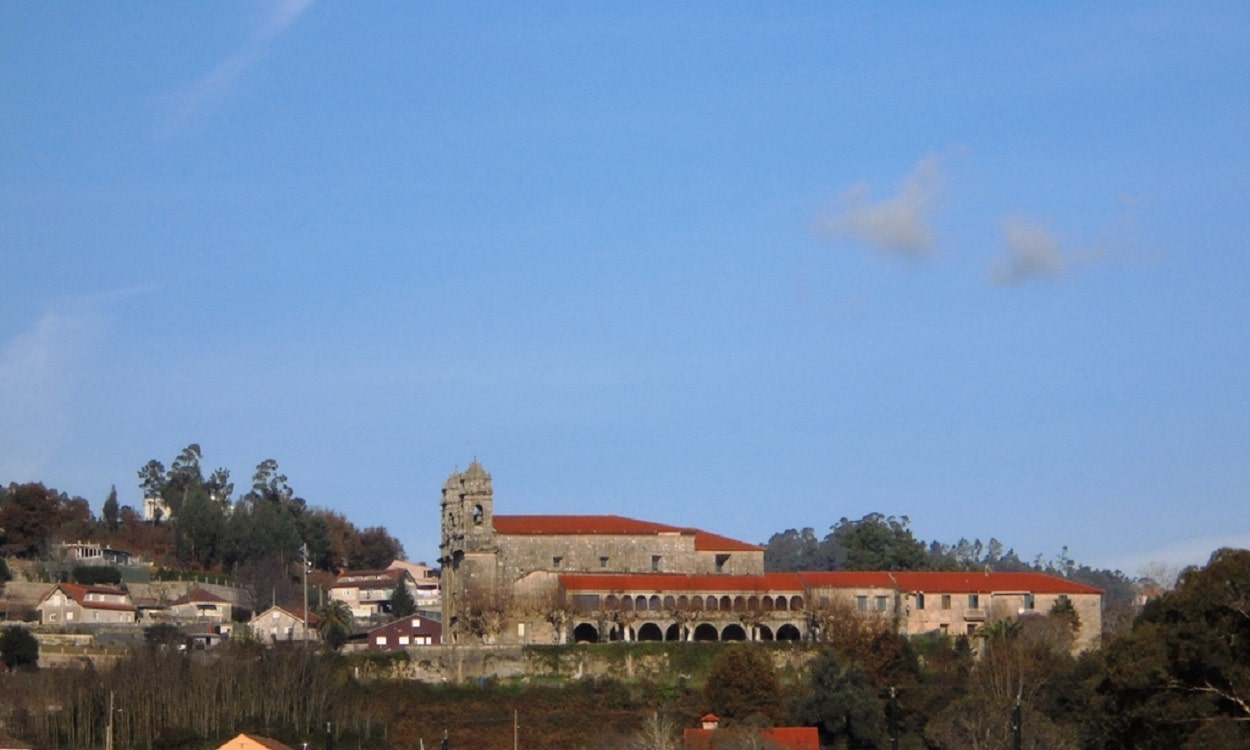
Lerez Monastery
The pazos, another wonder to see in Pontevedra
As an old stately city, Pontevedra also has an impressive heritage of stately homes, known in Galicia as pazos. The oldest is the Manor of Cadro de los Romay, located in Marín. It was built in the XNUMXth century although its tower is from the XNUMXth century and it also has parts from the XNUMXth century.
Along with this, do not forget to visit the House of the Bells, a Gothic-Renaissance beauty; The one of the Come on, typical of the Renaissance; that of Old Mail and Rectoral of Santa María. As well as the pazos of the Counts of Maceda, current Parador de Turismo; of the Gago and Montenegro and Marino de Lobeira, both Renaissance; from mugartegui, one of the most outstanding civil baroque buildings in Galicia, and Castro Monteagudo, which houses the Provincial Museum of Pontevedra, which we will talk about later.
The House of the Fonseca
This beautiful neoclassical building was built in the early XNUMXth century. Its pediment stands out, crowned by two winged griffins and which forms a portico with eight columns. At each end of this there is an Egyptian sphinx that seems to guard the entrance. It is currently the Provincial Historical Archive.
Other civil monuments
Along with the above, you can see in Pontevedra other civil constructions that respond mainly to the eclecticism XNUMXth century. It is the case of Town hall, inspired by the French Louis XV style, and the pretty Palace of the Mendoza, which also shows influences from Gallic architecture. It is also worth seeing the Palace of the Provincial Council, the old Barracks of San Fernando and the building of the Bank of Spain.
Touring the squares, an essential among what to do in Pontevedra
If we had to mention a peculiarity of the Galician city it would be the large number of places it has. Some of them are medieval and bear the name of the guild that settled in them. For example, we will tell you about the the smithy, which acts as Plaza Mayor and in the middle of which is the source of the same name, dated in the XNUMXth century. As a curiosity, we will tell you that it has given rise to one of the popular slogans of the city, which, translated from Galician, says: «Pontevedra is a good town, it gives drink to those who pass, the fountain in the Herrería, San Bartolomé in the square».
Anyway, so as not to get bored with long lists, we will also mention the squares of the Peregrina, where is the beautiful church of the same name and of which we have already spoken to you; that of Teucer, framed by orange trees; the of the Firewood, with its pazos and its traditional houses with arcades, and that of the Vegetables, full of tapas bars.

Méndez Núñez Square
But perhaps two stand out from the rest. One is the precious Méndez Núñez square, which is accessed through the arch of the house of the Cruz y Montenegro. And the other the one of Curros Enriquez, with its charming French-style attic building and the fountain of the satyrs, who have to be pulled by the tongue to make the water come out.
And, next to these squares, a good number of medieval streets make up the old town that we advise you to see. For example, the Rua dos Arcades, where the popular Café Savoy is; the Royal Street and Rúa Manuel Quiroga or Street of the Shops.
The modernist architecture of Pontevedra
The endless architectural heritage of the Galician city is complemented by a good number of modernist buildings. Among the first, the imposing Valle-Inclán Institute; the wonderfull Pazo de Lourizan, the central building of Post; the one of Modern Cafe, whose interior is also modernist, and the so-called Villa Pillar, which combines that style with features of the Indian architecture.
The Provincial Museum of Pontevedra
Located in the Pazo de Castro Monteagudo, as we told you, although it has later been expanded to other buildings, it is the main museum in the city. Like others of this type, it exhibits a miscellany of artistic objects. But, unlike those, this one has huge value.
This is the case of Roman period goldsmith collection and even earlier. And also from the paintings of Francisco de Goya and Joaquín Sorolla or the sacred art pieces. All this without forgetting that the Ruins of Santo Domingo, whose porticoed head is, as we said, a National Monument.
Burgo Bridge
We will finish our tour of the monuments of Pontevedra with this old bridge that gave the city its name. Built in the XNUMXth century on an earlier Roman one, it crosses the Lerez river and stands out for its many low arches.
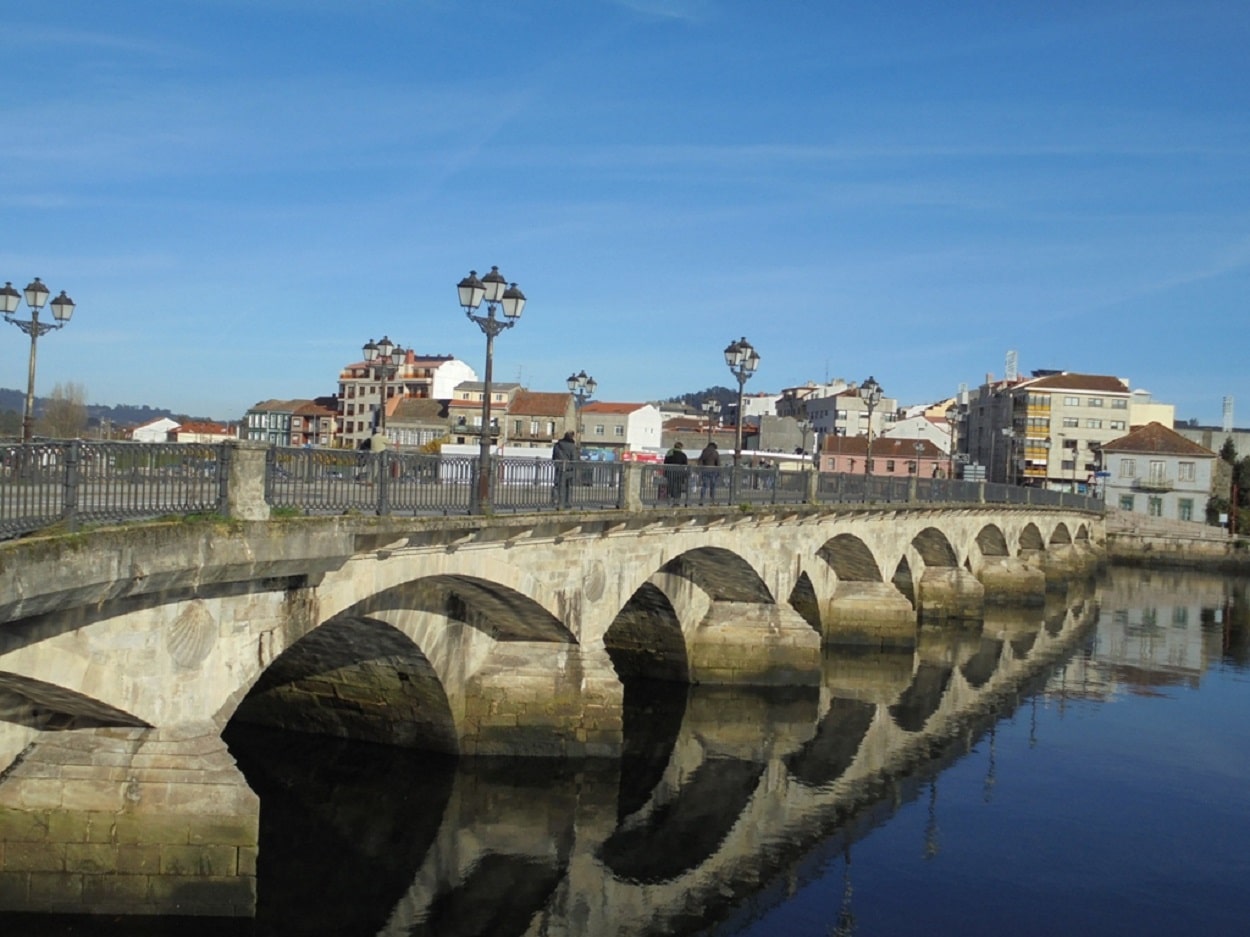
Burgo Bridge
What to do in Pontevedra: enjoy its privileged environment
The Galician city has a large number of parks where you can rest and stay in contact with nature. Among them, we will quote you the Marismas del Alba parkThat of CampolongoThat of valdecorvos or the Lourizan, which is one of the most important botanical gardens in Galicia.
But, above all, we must highlight the Sculpture Island park, which you can reach by the walk that follows the bank of the Lerez river. In it you will see twelve sculptures by international authors whose common denominator is that they show the relationship of man with his natural environment.
We also advise you to visit the Alameda of Pontevedra, a park designed in the XNUMXth century by Rodriguez Sesmero including a beautiful bandstand and painter's tiles Carlos Nephew. However, perhaps the most beautiful is the entrance, with two large columns crowned by lions. All this without forgetting the precious Covo island, a natural setting of great ecological value.
On the other hand, outside the city, we advise you to take routes such as the one fluvial path of the river of the Gafos, with six kilometers of extension and with an extraordinary beauty. And also the one that passes through the Pontillón de Castro Forest Park, shorter still than the previous one but no less beautiful, and the Route of the Camellia of the Rías Bajas, whose protagonist is this flower but which also has impressive landscapes.
What to eat in Pontevedra
It would be almost a sin for you to visit Pontevedra and not have the pleasure of eating its typical dishes, a perfect example of the extraordinary Galician gastronomy. First of all, you have the wonderful Atlantic fish and shellfish. Signature dishes in this sense are the octopus to feira, Hake Galician, conger eel with peas or turbot. But above all the lamprey cooked in its own blood. And we also advise you the crab soup, lobster with chocolate or scallops in the style of the Rías Bajas.
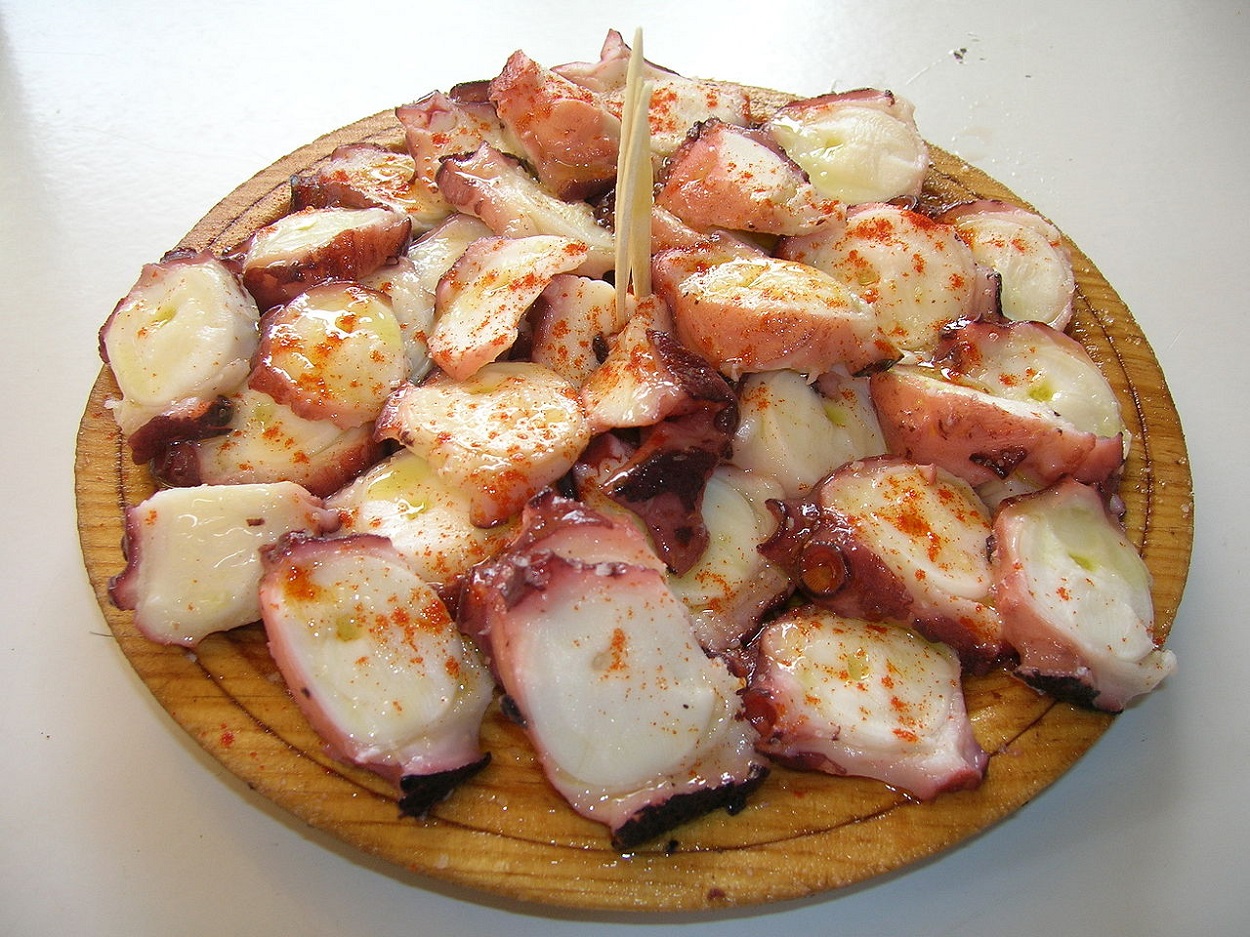
Octopus with Feira
Meats are not lagging behind, since the province of Pontevedra has a magnificent beef in the area of Moana. And equally typical is pork, present for example in the Lacon with turnip tops and the barbecues.
Regarding desserts, you have the rice pudding, canes filled with cream, curd, crepes and cool, which are a kind of fritters. To drink, have a glass of the magnificent Albariño wine and, as a culmination of the meal, a little coffee liquor or burned.
When is it better to travel to Pontevedra
The Galician city has a Oceanic climate, with cold winters and hot summers. Temperatures during the first season have an average of about seven degrees Celsius, while in the summer they can easily reach thirty. For its part, rainfall is abundant and distributed throughout the year. Nevertheless, it rains less than in other places in Galicia.
Therefore, the best times to visit Pontevedra are spring y summer. In addition, in the month of August the Pilgrimage festivities, patron of the province, and the city fills with visitors and animation.
How to get to Pontevedra
The closest airport to Pontevedra is Peignoir, in Vigo, which is about thirty kilometers away. However, you have buses to get around from the aerodrome. Regarding these, you can also travel to the Galician city in bus from the main cities of Spain.
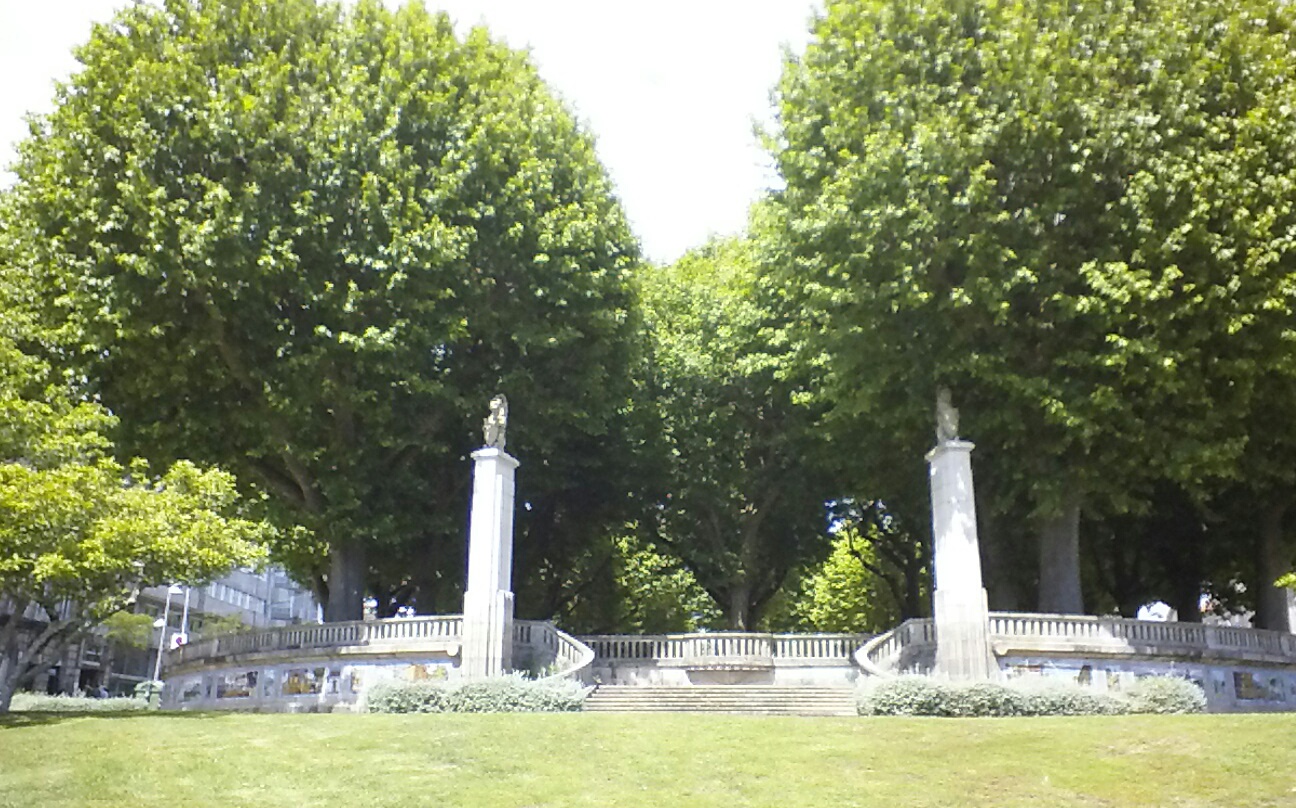
Alameda de Pontevedra Park
Or, if you prefer, you can use the ferrocarril. The station is located in the southern part of the city and is connected to both Madrid as with the main towns in Galicia.
You can also travel in your own car. The road that takes you to Pontevedra is the AP-9 or Atlantic Highway, which connects Ferrol with the Portuguese border. Then you must take the PO-10, which is the city's ring road, to take the exit that interests you.
Finally, to move around Pontevedra you have several lines of buses. And you can also choose the bike. The city has large areas without car traffic and, where there is, it is limited to thirty kilometers per hour. However, Pontevedra is a small city and, therefore, perfect for you to visit. walking.
In conclusion, if you were wondering what to do in PontevedraHere is our guide to visit its monuments, explore its beautiful natural environment and enjoy its gastronomy. What are you waiting to meet her?